Take a Ride on Wakatobi dive resort’s iconic dive boats
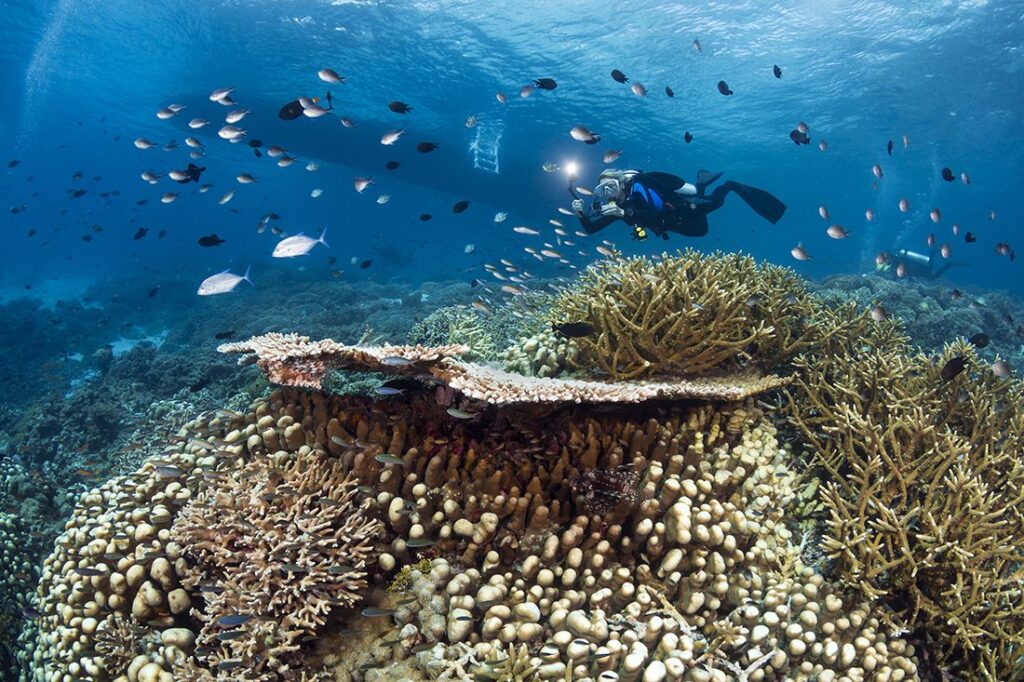
Most dive and snorkeling trips begin with a boat ride. It’s true at destinations around the world, including Wakatobi Resort. Yes, there is the House Reef, which is one of the most acclaimed shore dives in the world. But to discover the full scope of the resort’s marine preserve, you’ll have to get aboard something that floats. We’d like to introduce you to the Wakatobi fleet and share some of the reasons why many divers feel they are the ideal boats.
Meet the fleet
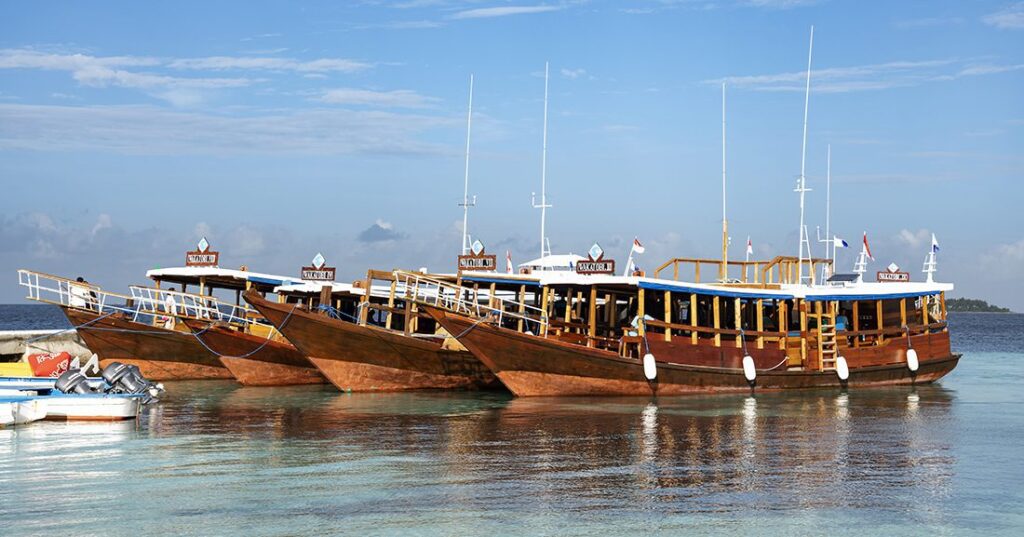
Wakatobi Resort operates a fleet of eight dedicated dive/snorkel boats, all around 20 meters/67 feet in length, with a beam width of 4.5 meters/14.7 ft. Because each is hand-built by artisanal craftsmen, no two are identical, but all follow a similar design and layout. Though traditional in design, they are all fitted with modern safety and navigation equipment such as oxygen, GPS and marine radios.
One of the most important common features of their boats is the full-length roofs. Sun protection is a vital but too-often overlooked aspect of diving and snorkeling activities in the tropics. The cooling effects of water and wind may keep passengers from noticing the full impact of sun exposure, but it doesn’t take long to develop debilitating sunburn or dehydration. That’s why Wakatobi’s boats are covered from bow to stern, and don’t require passengers to slather sunscreen or don cover-ups just to keep from burning. And for those who want to catch some rays, there is a roomy open section on the bow.
” I’ve done a lot of boat diving and know how uncomfortable it can be when there are 12 or 14 people on a smaller boat trying to gear up with no elbow room. I fell in love with Wakatobi’s boats. They’re open, spacious, and super comfortable.” – Mitchell Bennett
Another design feature that guests on Wakatobi’s boats really appreciate is the location of the bathroom, or what nautical types call “the head.” Aboard many boats, a trip to the head involves negotiating a ladder down into a forward cabin, then entering a confined space to take care of necessities while the boat bounces over the waves. Wakatobi’s dive boats place a spacious head in the more stable stern area, and at deck level.
Personal Spaces
The long profiles of Wakatobi boats allow for ample bench seating and plenty of elbow room for gearing up and moving around. In theory, each boat could comfortably accommodate a large number of divers, but bulk capacity is not Wakatobi’s style. For example, the resort’s largest boat takes a maximum of 16 divers, while slightly boats run with a maximum complement of 12 guests.

Items like face masks, fins, booties, and so forth are stowed in individually-numbered storage baskets beneath the gunwale benches. Each guest is assigned a numbered basket when they first check in with the dive center, and those baskets are then transferred to and from boats by the dive staff throughout the guest’s stay.
A dedicated camera table and rinse station are located near the rear of the boat, while egress to and from the water is by wide side entry doors on both sides of the boat. These openings are set midway between the camera table and the forward bench seats, allowing photographers room to assemble their gear without being in the way of other divers and snorkelers entering or exiting the water.
Water entry is more of a step off than a giant stride, with a foot and a half drop to the water. Divers needing an easier entry for reasons such as lower back issues can simply sit and allow the deck crew to help them in and out of their gear. Getting back into the boats is also easy, as there’s a very sturdy ladder with easy-to-use handles. An additional benefit of the side entry points is the separation from the boat’s engine exhaust, which is far away in the stern.
Private Affairs
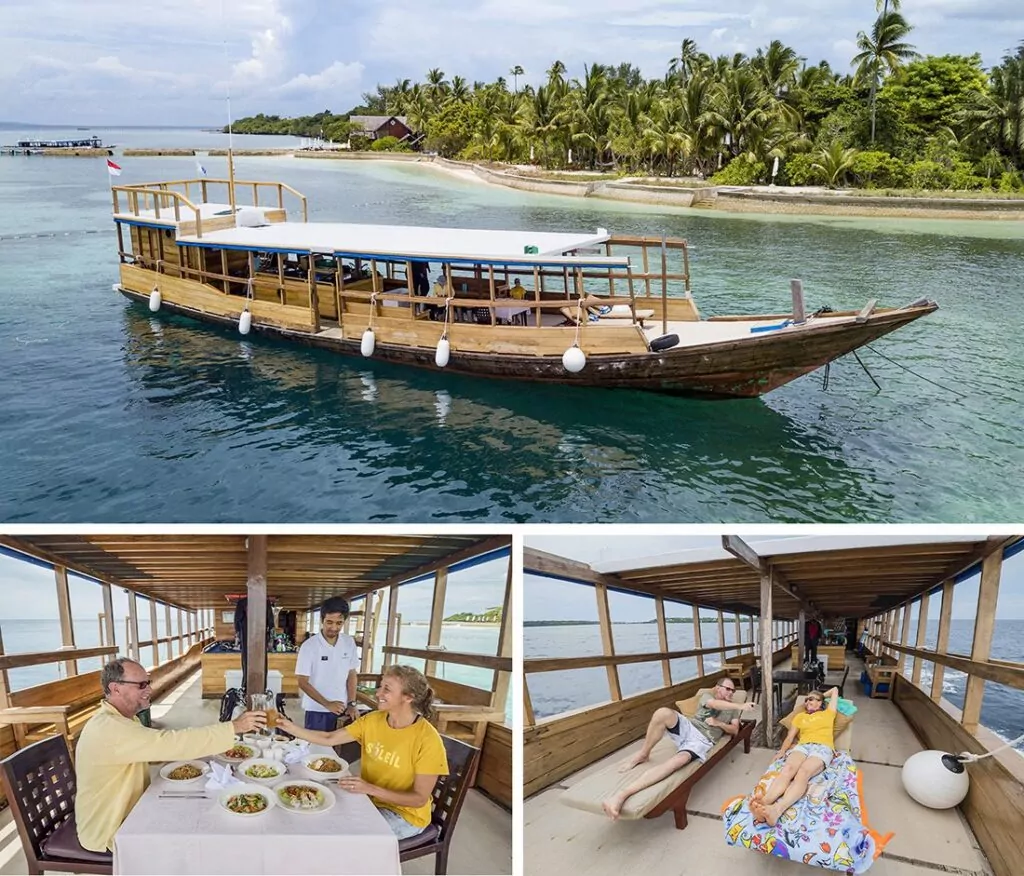
The Wakatobi fleet includes one vessel built specifically to accommodate private charters and provide individuals or small groups with a truly personal diving experience. Rather than the full-length bench seating found on the resort’s other boats, the spacious covered deck of the Wakatobi VII includes a shaded dining area, forward sun lounges, a kitchen station, and a changing room with a full bathroom and shower. A special feature is an upper deck, which can be used for sightseeing, sunning, or enjoying dinner under the stars.
Local practicalities
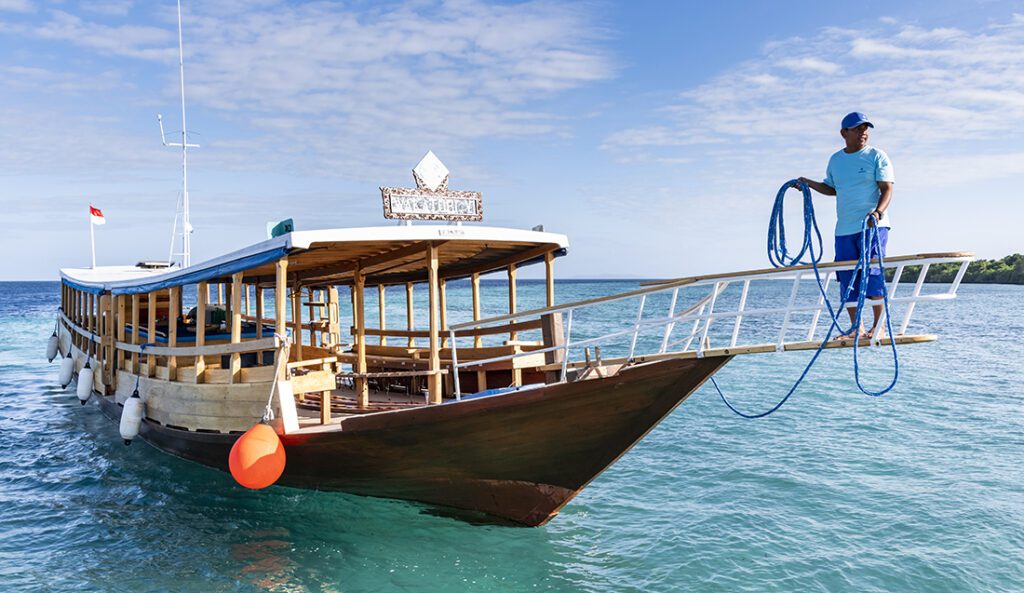
You might wonder why a premier dive and snorkel resort such as Wakatobi would operate a fleet of what appear to be traditional Indonesian ferry boats. Where are the sleek fiberglass launches fitted with a pair of throaty turbodiesels and gleaming metal rails?
There are a lot of reasons why they went the traditional route, beginning with their commitment to sustainability and community stewardship. As part of the Wakatobi mission to generate economic benefit for the local community, rather than import factory-built dive boats, they commissioned local boat builders to create our iconic boats.
Building locally not only kept revenue within the community, it also provided some environmental benefits. The choice of sustainable woods over fiberglass resins reduced the emissions associated with construction, while building close to home also reduced the carbon footprint created by importing boats from distant locations.
Beyond the “feel good” aspects of building locally, there are numerous practical reasons behind Wakatobi’s choices. The first is reliability. Because the boats are built by local craftsmen, repairs can be made quickly and easily—no waiting for a proprietary part to be flown in from a factory thousands of miles away. As a result, mechanical issues and maintenance is handled more expediently by their team.
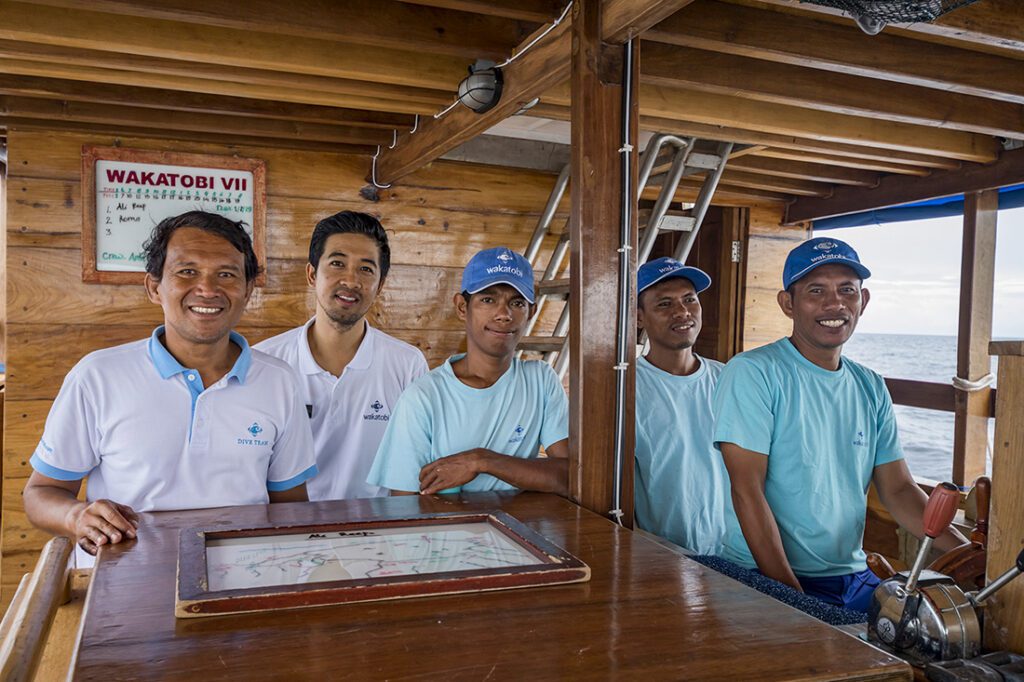
And then there’s efficiency. The long and relatively lean shape of their dive boats allows them to be powered by a single engine, consuming far less fuel, and creating fewer emissions than high-speed, turbo-diesel launches. The resort’s boats ease along at speeds in the 17km/11mph range, which is plenty fast enough for our style of diving. At Wakatobi, most sites are typically just ten to 30 minutes away, and even our most distant sites are reached in less than an hour.
This brings us to the third benefit of their traditional designs, which is comfort. At the relaxed speeds our boats travel, there is no pounding or lurching, and engine noise is reduced to a low burble that allows for normal conversations. The hull designs are extremely stable both underway and when at rest on a mooring. Passengers can relax on the way to the site and move about without having to clutch handrails to keep their balance. And though they rarely encounter rough water, the sharp bows and steep profiles of the Wakatobi boats allow them to knife through chop and waves with an easy motion.
The Human Element

One of the most important and valued features of the Wakatobi dive boats isn’t a physical element, it is the human element. Our boat crews and dive staff take great pride in providing the highest level of personal service and attention. It begins even before guests step aboard. The dive staff handles all equipment transfers to and from the boat and set up your gear. If you’d prefer to set up your own gear, that’s fine, and we’re there to assist if required.
The entire dive team is excellent. After the briefings, I felt like I could almost navigate the sites myself, that’s how thorough and personalized the descriptions are.”- Joe Bennett
Prior to each dive, Wakatobi’s guides not only provide a thorough briefing on what to expect, but also discuss expectations with each guest, and tailor the dive accordingly. In the water, our dive guides are experts at providing just the right level of attention, whether it’s being there to assist less experienced divers, allowing more accomplished divers to set the pace, or serving as expert critter spotters. Equal attention is provided to snorkelers, who often accompany divers to the many sites in Wakatobi’s marine preserve that have extensive shallow reefs.
After each dive, guests are presented with a cooling, mint-scented wet towel and offered a snack and beverage. Our chefs will also accommodate dietary requirements or wishes on the boats; our guests need just ask and we’ll make sure it’s there before the boat leaves the jetty. It is touches like this that make time on the boat more than just a surface interval or a necessary prelude to the in-water experience. In fact, many guests consider the relaxing time spent cruising to and from dive sites to be a thoroughly enjoyable part of the overall resort experience.
If you haven’t yet experienced how enjoyable a dive boat really can be, go to Wakatobi.com and get aboard.
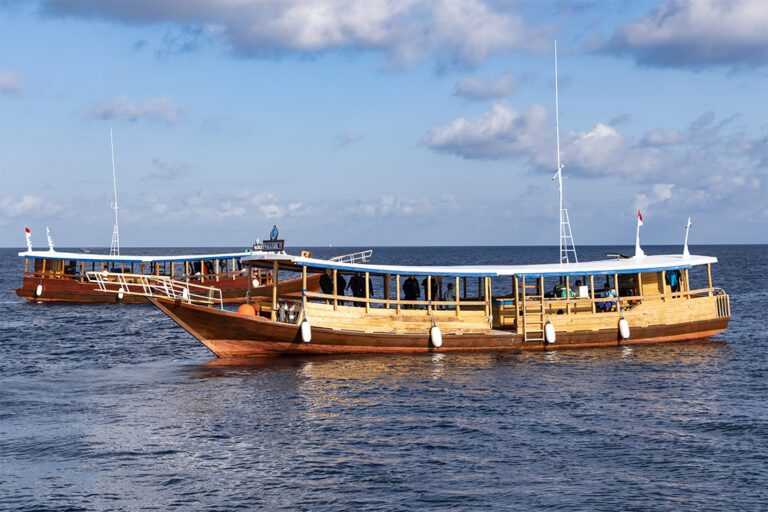

The dive boats at Wakatobi are the most spacious and comfortable I have been on in all my years of diving around the globe. They put a lot of thought into building boats that provide divers and snorkelers with all the necessities plus added benefits – lots of space, a full shower, cover for shade from the sun, and side entry makes it easy for anyone, including those who need assistance to get in the water. The boats are great – yay Wakatobi.